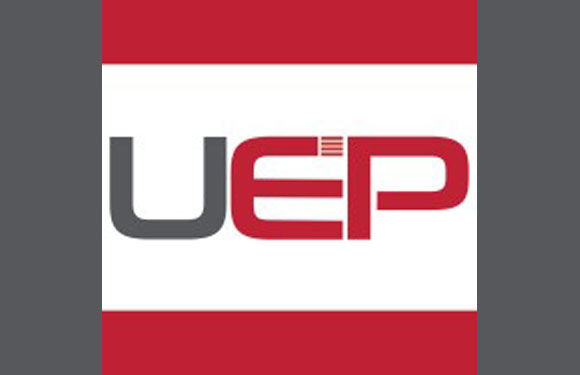
News
A New Direction for Customer Engagement
By Susannah Richardson, Marketing Director, Field Service and Contact Center Solutions, IFS
Effectively managing customer interactions is a real challenge for contractors. While retailers such as banks and insurers have long embraced self-service technology and multi-channel platforms to enhance the customer experience, field service-based organizations are still discovering how this technology can be best applied. Susannah Richardson, Marketing Director for Field Service and Contact Center Solutions, IFS, explains contracting companies need to understand that it’s simply no longer acceptable to expect customers to initiate contact by making a voice call. They must recognize the requirement to offer multiple contact channels and use unified data—or risk losing customers—and agents!

In today’s on-demand world, customers expect to use whatever channel is most convenient for their specific needs at that moment. The choice could vary depending on the customer’s preference, their age or even their mood. In the 18-24 age group, 60% prefer to use either web messaging or email to contact a company while just 23% would choose to call. In addition, customer interactions will often switch from one channel to another. An inquiry or request may start on social messaging, a mobile app or web chatbot, but move to an SMS text or email exchange, or develop over multiple phone calls.
Convenience is Key
Recent research by Ventana found the average number of customer engagement channels now supported by an organization has grown to almost eight. This highlights that companies must remember there is no one ‘right’ customer engagement channel and underlines that customers now expect to be able to make contact however they wish.
Smoother, More Intelligent Customer Interactions
Fortunately, technology such as artificial intelligence (AI) has enabled companies to intelligently manage multiple channel touchpoints. Voice recognition, natural language processing (NLP) and text analytics all provide powerful ways to parse, interpret and best route incoming requests, performing an automated triage to decide the most appropriate next action. If a customer is emotional or distressed, an AI-based system can detect the urgency and pass the contact directly to an agent. But if a self-service solution is appropriate, the customer can be provided immediate access.
“But I’ve Already Told You”
Multi-channel conversations generate streams of diverse information that are typically held in multiple Customer Relationship Management (CRM) silos, so forcing agents to quickly access historic records, in real-time, with multiple tabs and applications open on-screen makes it difficult to provide good customer service. This is because inevitably, customers are left waiting for long periods and/or may be asked to repeat basic details. It’s no surprise that as frustration builds up, both customers and agents alike start to churn—but that is not an organization’s only retention problem.
Benefit from One Clear View – for the Customer and Agent
The real challenge for service-oriented companies is how to provide agents with the communication and workflow tools they need to provide customers with a single, unified experience whenever they initiate a contact. This is where a complete customer engagement platform can help. Software technology has the capability to group together all the associated communications and messages between each customer and an organization. ‘Omni-channel grouping’ means that if an email or tweet is followed by a web chat or call, a good customer engagement platform will automatically present the agent with all the related communication on-screen in a logical format, while it also manages queuing and skills-based routing of contacts.
Agents need tools that are fit-for purpose to deliver effective and efficient customer service. That means a single, clear, streamlined and unified desktop that removes the need to wade through multiple CRM screens is hugely advantageous. For instance, an AI-powered agent desktop can present information linked to the customer record from multiple underlying systems and databases and guides agents through complex transactions. By managing workflow and presenting contextualized data, guidance and forms, an agent can focus on providing customers with the best possible resolution and experience.
Happy Customers, Happy Agents, Cost Savings
Providing agents with a clear, single view of any customer contact or relationship on-screen has ROI potential. While the initial outlay for an omni-channel solution with a smart agent desktop may at first seem a cost increase, the greater efficiency of agents as a result of these solutions represents huge cost savings. An omni-channel desktop enables faster training for new and existing agents, 50% in some of the cases I have witnessed. This means existing agents spend less time away from serving customers and the domino effect of increased waiting times is prevented. It also speeds up the process of getting new recruits trained up on calls, which allows more queries to be handled.
From Omni–Channel to Chatbots
Our customers provide testament to the success of this approach. One recent IFS customer centralized and modernized its contact center operations with our Customer Engagement solution. The Head of Business Change, Aftersales, has run the numbers: “We have already managed to halve our average handling time and our agents are 20% more effective in their day-to-day operations.” They are now looking to provide customers with the opportunity to self-serve, offering IFS online chat, intelligent chatbots, plus a knowledge base and customer surveys.
Don’t Miss the Trick
In an industry where agent attrition rates are a constant concern, time is money. But solutions that make agent tasks easier help improve customer retention as well as an agent’s ability to confidently cross and upsell profitable additional services and products. Companies must recognize the opportunities afforded by customer engagement technology or will soon find themselves at the back of the customer satisfaction queue, missing out on the cost savings that come with enhanced agent efficiency.
About the Author
As Marketing Director for IFS Field Service and Contact Centre solutions, Susannah Richardson is focused on demand generation and product marketing within the UK market. Prior to IFS, Susannah led the marketing and business development teams for mplsystems and transformed the go-to-market strategy, product positioning and analyst relations for their field and customer service solutions. Prior to that Susannah led Product Management and Pre-Sales teams in Nortel and was instrumental in the rapid growth of their optical business in Europe.














